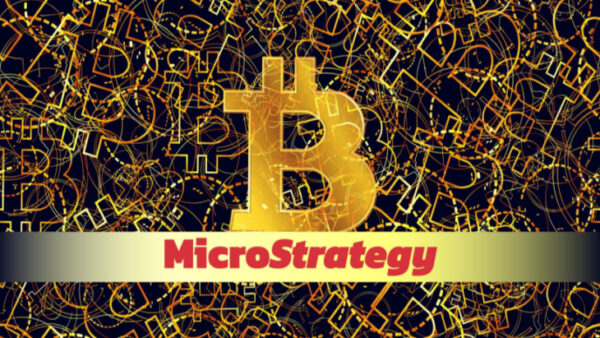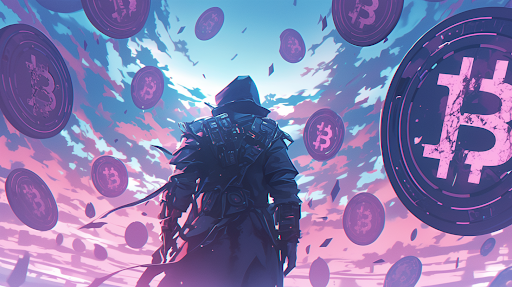PulseChain Crypto: How To Prepare For The Big Airdrop
The great PulseChain crypto airdrop is around the corner. And it promises to be a big deal. Afterall, it’s a complete fork of the Ethereum network. That means every asset that ever existed on Ethereum will be copied and also available on the PulseChain blockchain.

The only exception to this rule is that every Ethereum (ETH) token will be converted to one of PulseChain’s native tokens, Pulse (PLS), on a 1:1 basis. So what’s the big idea behind this fork? Well, efficiency for starters.
We’ve heard for years that the Ethereum blockchain is a slow and somewhat cumbersome one. This opened the opportunity for the likes of Solana and Bitgert to make inroads. It’s also long been noted that the mining process of Ethereum is not the most environmentally friendly. This is at least one of the reasons Ethereum has planned to launch Ethereum 2. This new version will make use of a proof-of-stake system. This as opposed to the old proof-of-work model it had relied on since its inception.
However, the forthcoming PulseChain crypto project is pumping the gas and speeding up this process… So to speak. This isn’t actually part of the Ethereum 2 launch. Instead, think of it as a companion to Ethereum – at least for the time being.
Why This PulseChain Crypto Project Matters
The main differences between Ethereum and the PulseChain crypto project will be speed and cost. PulseChain will employ a delegated proof-of-stake mechanism. This will allow for much faster transaction speeds. It will be capable of hundreds of transactions per second as opposed to Ethereum’s 13.
On top of this, Ethereum miners need to hash complex equations for the chance to be rewarded ETH. However, validators of Pulse will simply focus on securing network transactions in return for a small fee. This should greatly reduce the amount of energy needed to be rewarded PulseChain crypto tokens.
However, what truly separates PLS from ETH is every PLS token will be created at launch. This opposed to the traditional means of an ever-expanding supply of coins. And over time, 75% of transaction fees will be burned… Thus reducing the total supply over time. This makes it a truly deflationary token.
This will also prove to be a very interesting experiment. When the PulseChain crypto project launches, exact copies of smart contracts, ERC-20 tokens, user accounts and NFTs will exist on PulseChain. At least up to the latest block number on Ethereum at the time of launch.
Another big question is how these cloned assets will be regarded. For instance, stablecoins will likely lack the support they have from being pegged to a collateralized asset. That should make them as useful as Terra’s LUNA. But there’s likely to be a whole lot of uncertainty in the beginning stages. And we should all expect some volatility in the markets upon the launch of PulseChain crypto.
More About This Hard Fork
PulseChain crypto isn’t entering into unchartered waters. Bitcoin Cash (BCH) was the result of a hard fork. These are just examples of duplicates of a network with some updates to the coding. And just like Bitcoin Cash, this hard fork will include increased scalability and as was mention above, faster speeds.
When the hard fork takes place, it is likely to lead to the largest airdrop of newly created tokens of all time. If you have any Ethereum-based NFTs, like magic, you’ll have a duplicate version of it on the PulseChain network. If you’re holding any Basic Attention Tokens (BAT), you’ll suddenly have “P BAT” tokens as well. CRO tokens from Ethereum will be doled out as P CRO on PulseChain. The big question here is whether any of these “P” versions will be seen as having any value at all.
Like we mentioned above, the only exception to the duplicate rule will be with ETH itself. Duplicates of ETH will be PLS on the PulseChain network. And as for the original Ethereum network, it will remain completely untouched. So there’s no need to worry about losing any assets in this process.
Caveat Emptor
There doesn’t appear to be any natural reason to worry about participating in the PulseChain crypto airdrop. However, because this is likely to cause some commotion in the crypto-sphere, there are some things to look out for… Namely, scammers.
Whether you’re a crypto rookie or have been mining for ages, you know there are plenty of crypto scammers out there. And this event is likely to pull them out of the woodwork. So here are some valuable pieces of advice for those participating in the PulseChain crypto airdrop.
You know that seed phrase you were told to never ever under any circumstance share. Well, if someone asks for your seed phrase in order to dole out any spoils, never ever under any circumstance share it. That’s red flag number one.
Another thing to be wary of is connecting a wallet to apps you’re not familiar with. This on the surface isn’t usually a big deal. PulseChain itself should pose no issues. However, look for any permissions being granted in the process. If an application is asking for access to your funds, ignore it completely. And that should be the case for any transactions taking place with your crypto wallet.
Lastly, be aware that some unscrupulous tokens might show up in your crypto wallet in the form of an airdrop. This is by far the least likely outcome. But it’s also the most sophisticated version of a scam. If a random token appears in your wallet without the “P” in front of it, ignore it. But if you ignore this advice and if it asks you to sign a smart contract before cashing out, seriously, don’t do it.
That smart contract could be requesting access to the entirety of the funds in your wallet. You really don’t want to do that. And PulseChain isn’t going to ask or require you to do so to get your duplicate tokens.
The Bottom Line on PulseChain Crypto
The PulseChain crypto project is an exciting and much needed addition to the blasé crypto markets right now. It should add a much-needed boost in interest. Plus, it’ll be introducing a whole new series of tokens to the mix – even if a whole lot of them will be worthless.
Lastly, if you’re looking to participate in the PulseChain crypto airdrop, all you have to do is sign into your wallet and set the network to “PulseChain.” You can see what wallets will work for this here. From there, you’ll have access to the tokens you have in the PulseChain blockchain.





